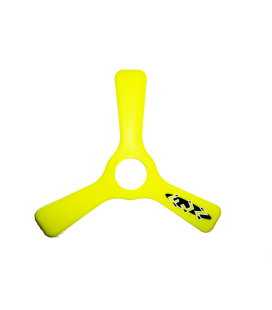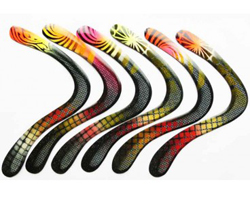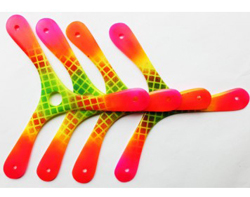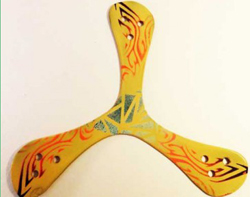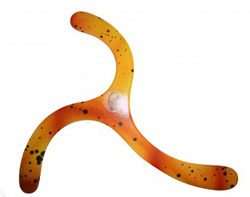Panier 0
0 item(s) - 0,00 € Pas de produit
To be determined Frais de port
0,00 € Total
Quantité
Total
Produit ajouter avec succès
Il y a 0 éléments dans le panier Il y a 0 éléments dans le panier
Total
Catalogue
Boom a Rang
Thomas Patzer est le créateur de BOOM-A-RANG, c'est un lanceur allemand, professeur de sport et de technologie.
Sa carrière de lanceur de boomerang a commencé en 1985 avec la construction d'un boomerang en bois issu d'un livre de Günter Veit. A ce moment Thomas est tellement fasciné par le boomerang qu'il s'est immédiatement inscrit au Boomeran...
Fun ABS
12,90 € DisponibleDisponibleLe boomerang "Fun" est le second boomerang proposé par BOOM-A-RANG Il s'agit d'un boomerang tripale en ABS aux couleurs éclatantes et fluo. Le Fun ABS est un boomerang droitier d'une portée d'environs 22 mètres Le matériaux qui le compose: L'ABS est plus dense que le polypropylène, et donc plus lourd, ce qui le rend plus résistant au vent...Boomerang Wave
12,90 € DisponibleDisponibleLe Wave est un boomerang de chez BOOM-A-RANG. Nous apprécions tout particulièrement ce tripale à la forme des plus originales. La caractéristique principale de ce boomerang est de résister à des vents soutenus et ce, sans aucune modification. Le WAVE peut se lancer à la fois dans un vent calme mais il peut supporter des vents forts. Il est vraiment...

